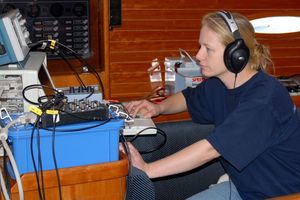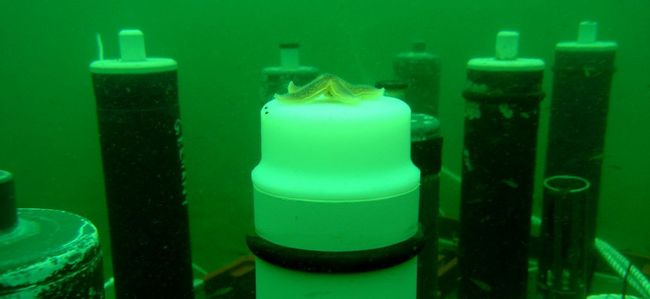Comparison of click detectors
| Name | Environmental impact assessment with the help of acoustic detectors |
| Sponsors | Federal Ministry for the Environment, Nature Conservation and Nuclear Safety |
| Duration | 01.08.2006 to 31.10.2009 |
| Cooperation partners | National Environmental Research Institute, Research and Technology Cente West coast, BIOCONSULT SH; University of Exeter |
| Projektleitung | Dr. Harald Benke |
| Projektmitarbeiter | Dr. Ursula Verfuß |
There are not only wind energy constructions onshore, also there are large wind farms in the Baltic Sea. Thereby much noise accrues, which can have a negative influence to indigenous marine mammals like the harbour porpoises.
The aim of the project AMPOD was to develop standardised methods and guidelines which could be used to compare monitoring programs (e.g. Natura 2000) or environmental impact assessments of wind farms.
First, the detectors were calibrated in different settings and after that they were moored in Danish Baltic Sea at areas with high densities of harbour porpoises. The gathered data and results from other cooperating projects were analysed. The acoustic features of the different detectors and the developed guidelines were presented on an international symposium.
Which results produces AMPOD?
If the recorded animal sounds stay within reason, the calibrated detectors reveals comparable results. All noises were recorded, which have a specific pattern. Certainly the efficiency of the T-PODs decrease with an increase background noise which are arise of undulation and can impact the record. The newest detectors are equipped with a noise cancelling which leads to a increase sensitivity of the devices.
That means the quality of the results ascertained by the T-PODs is depending on location and also on the sensitivity of the device.

